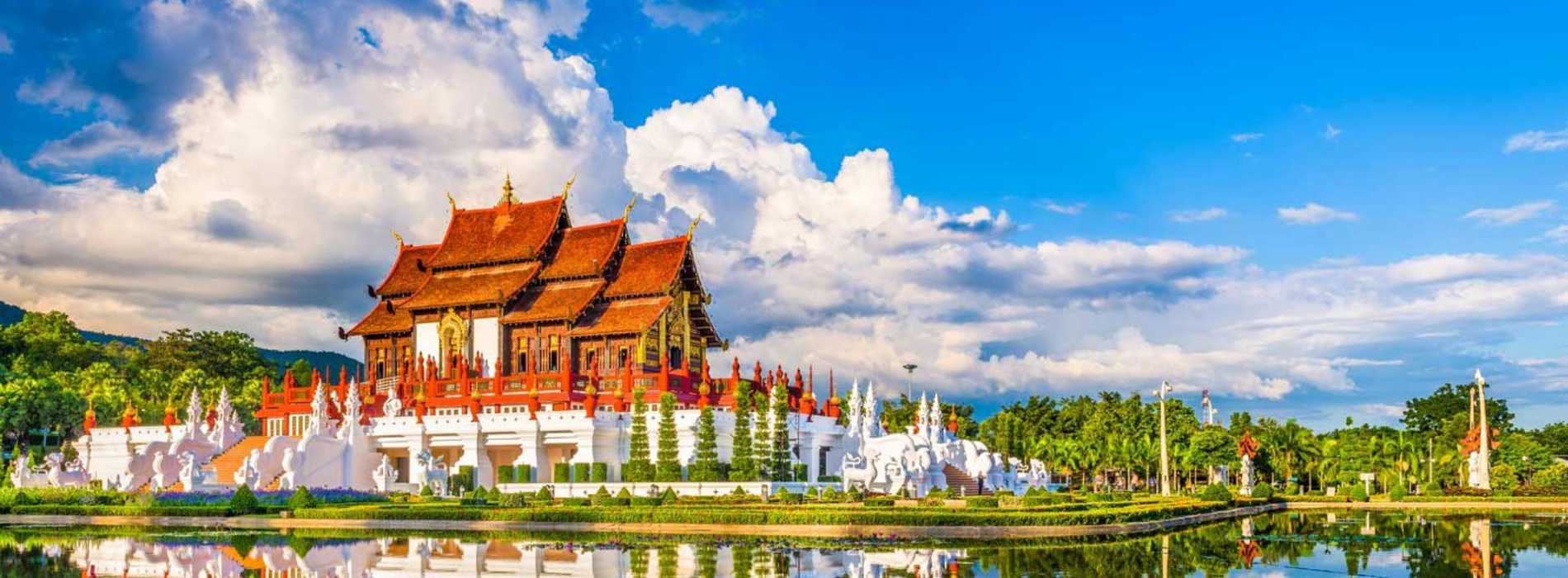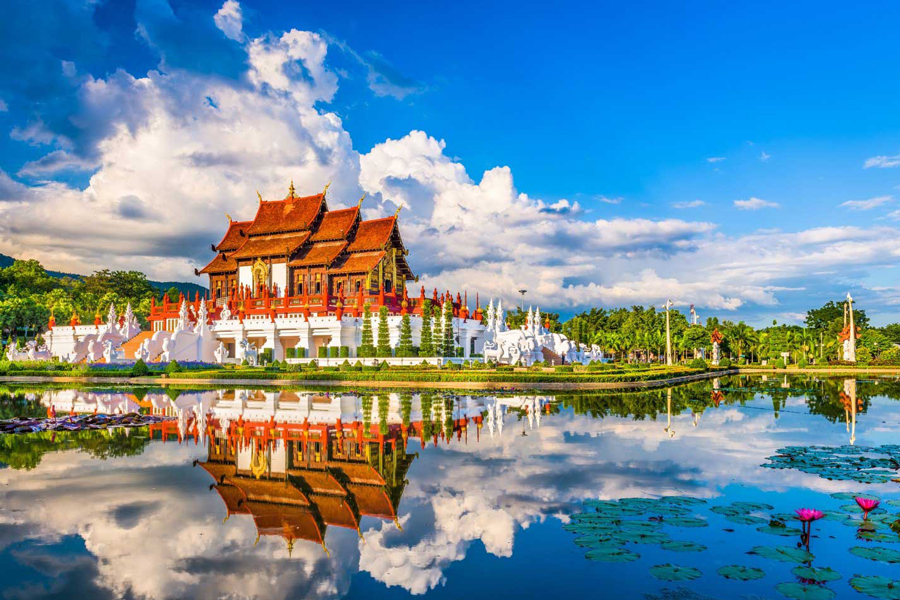Bhubing Palace

The Bhubing Palace, also known as Phra Tamnak Bhubing, is a royal residence located on Doi Suthep, a mountain near Chiang Mai, Thailand. It is situated within the Doi Suthep-Pui National Park and is approximately 3 kilometers northwest of Chiang Mai city.

The palace was built in 1961 to serve as a winter residence for the royal family, particularly for King Bhumibol Adulyadej and Queen Sirikit. The name "Bhubing" means "the royal winter residence." The palace is known for its beautiful gardens, cool climate, and traditional Thai architectural design.
While the Bhubing Palace is a royal residence, parts of the grounds are open to the public. Visitors can explore the gardens, stroll around the picturesque surroundings, and visit the royal floral research project. However, access to the actual palace buildings is restricted, as they are used by the Thai royal family during their visits to the region. The palace and its gardens are a popular tourist attraction, providing a peaceful retreat from the hustle and bustle of Chiang Mai.
Nestled gracefully on the slopes of Doi Suthep, the Bhubing Palace stands as an architectural jewel and a testament to the rich history of the Thai monarchy. Commissioned by King Bhumibol Adulyadej in 1961, this majestic residence was envisioned not only as a winter retreat for the royal family but also as a cultural symbol rooted in the northern Thai heritage. The architectural brilliance of the palace is a fusion of traditional Thai design, with intricate details and vibrant colors, prominently featuring the use of teakwood that lends it a timeless allure.
The location on Doi Suthep, with its cooler climate and breathtaking scenery, adds to the allure of Bhubing Palace. The palace complex extends beyond the living quarters, encompassing meticulously landscaped gardens that have become a sanctuary for visitors seeking tranquility amidst nature. The royal floral research project, showcasing Thailand's diverse flora, further highlights the palace's commitment to horticulture and environmental conservation.
While the main residential areas of Bhubing Palace remain private, selected portions of the grounds are open to the public, allowing visitors to marvel at the architectural grandeur and immerse themselves in the serenity of the surroundings. As a cultural and historical landmark, the palace serves as a bridge between the modern era and Thailand's rich heritage, symbolizing the enduring connection between the royal family and the people.
Beyond its cultural significance, Bhubing Palace plays a pivotal role in environmental stewardship. The palace grounds serve as a platform for various conservation initiatives, promoting sustainable practices and showcasing the importance of preserving the natural beauty of the Doi Suthep-Pui National Park. This dual role — as a historical residence and a center for conservation efforts — underscores the royal family's commitment to balancing tradition with progressive ideals.
Bhubing Palace, with its architectural grandeur, lush gardens, and cultural importance, is more than a residence; it is a living testament to the harmonious coexistence of tradition, nature, and the enduring legacy of the Thai monarchy. Visitors, both local and international, are invited to not only witness the splendor of the palace but also to appreciate the cultural and environmental values it embodies.
You may also like: Loy Krathong Festival: Things to know
The best time to visit Bhubing Palace is during the cool season, which typically spans from November to February. During these months, the weather in Chiang Mai and the surrounding area is more comfortable, with cooler temperatures and lower humidity. The cool and dry conditions make exploring the palace grounds and gardens more enjoyable.
Specifically, December and January are often considered the optimal months to visit Bhubing Palace. The weather is cooler, and the gardens are likely to be in full bloom, showcasing the vibrant colors of the various flowers and plants. This period aligns with the Thai winter, and the cool temperatures create a pleasant atmosphere for visitors.
It's important to note that Bhubing Palace is a popular tourist attraction, and during peak tourist seasons, there may be larger crowds. If you prefer a quieter experience, visiting during weekdays or slightly outside peak tourist months might be advisable.
Always check the local weather conditions and any special events or closures before planning your visit to ensure the best experience at Bhubing Palace.
To get to Bhubing Palace in Chiang Mai, Thailand, you have several transportation options. Here are common ways to reach the palace:
1. By Car or Taxi:
- The most convenient way to reach Bhubing Palace is by car or taxi. You can hire a taxi or use a ride-sharing service from Chiang Mai city to the palace. The journey typically takes around 20-30 minutes, depending on traffic conditions.
2. By Songthaew:
- Songthaews are shared or private red trucks that operate as shared taxis in Chiang Mai. You can find them at various locations in the city. Negotiate a fare with the driver to take you to Bhubing Palace.
3. By Motorcycle or Scooter:
- Renting a motorcycle or scooter is a popular option for more adventurous travelers. Several rental agencies in Chiang Mai offer motorcycles for daily or hourly rental. Ensure you have the necessary license and take note of safety guidelines.
4. By Public Transportation:
- Chiang Mai also has public buses that travel to the Doi Suthep area. You can take a bus from the city to the vicinity of the palace and then walk or take a short ride to the entrance.
5. By Guided Tours:
- Many tour companies in Chiang Mai offer guided tours that include visits to Bhubing Palace along with other attractions. This option is convenient if you prefer a guided experience with transportation provided.
You may also like: The BEST Bangkok Exploring floating markets 2024